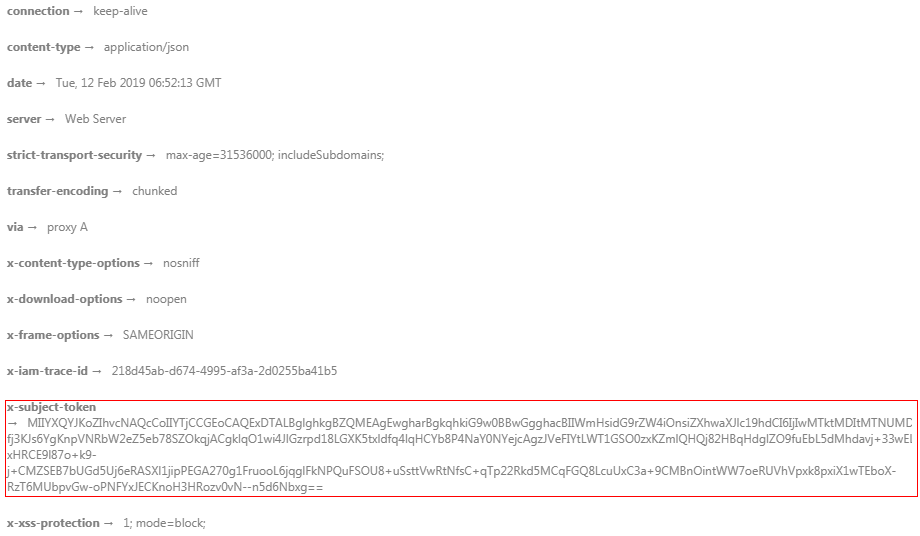Response¶
After sending a request, you will receive a response, including a status code, response header, and response body.
Status Codes¶
A status code is a group of digits, ranging from 1xx to 5xx. It indicates the status of a request. For more information, see Status Codes.
If status code 201 is returned, the request is successful.
Response Header¶
Similar to a request, a response also has a header, for example, Content-Type.
Header | Description | Mandatory |
|---|---|---|
Content-Type | Media type of the response body sent to a recipient Type: string Default value: application/json; charset=UTF-8 | Yes |
X-request-id | Request ID for task tracing Type: string request_id-timestamp-hostname (request_id is the UUID generated on the server. timestamp indicates the current timestamp, and hostname is the name of the server that processes the current API.) Default value: none | No |
X-ratelimit | Total number of flow control requests Type: integer Default value: none | No |
X-ratelimit-used | Number of remaining requests Type: integer Default value: none | No |
X-ratelimit-window | Flow control unit Type: string. The unit is in minute, hour, or day. Default value: hour | No |
The message header shown in Figure 3-1 is returned.
x-subject-token is the desired user token. This token can then be used to authenticate the calling of other APIs.

Figure 1 Header fields of the response to the request for obtaining a user token¶
Response Body¶
A response body conveys information other than the response header and is generally sent in a structured format (for example, JSON or XML) defined by the Content-Type field in the response header.
The following message body is returned. The following is part of the response body:
{
"token": {
"expires_at": "2019-02-13T06:52:13.855000Z",
"methods": [
"password"
],
"catalog": [
{
"endpoints": [
{
"region_id": "********",
......
If an error occurs during API calling, an error code and error message will be displayed. An error response body is shown as follows:
{
"error_msg": "The input parameter is invalid.",
"error_code": "AIS.0101"
}
In the error response body, error_code is an error code, and error_msg provides information about the error. For more information, see Error Codes.